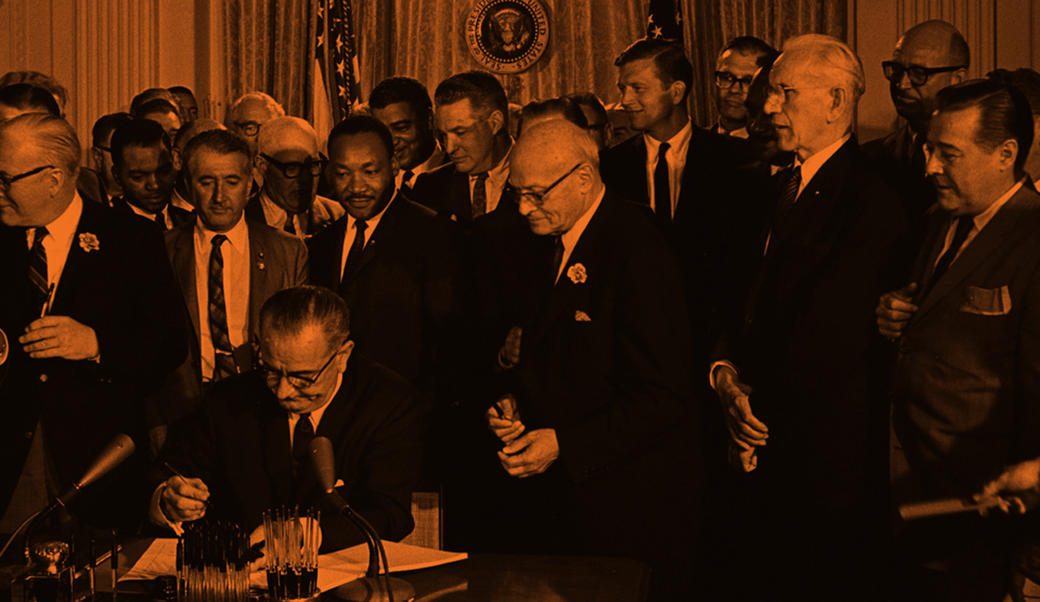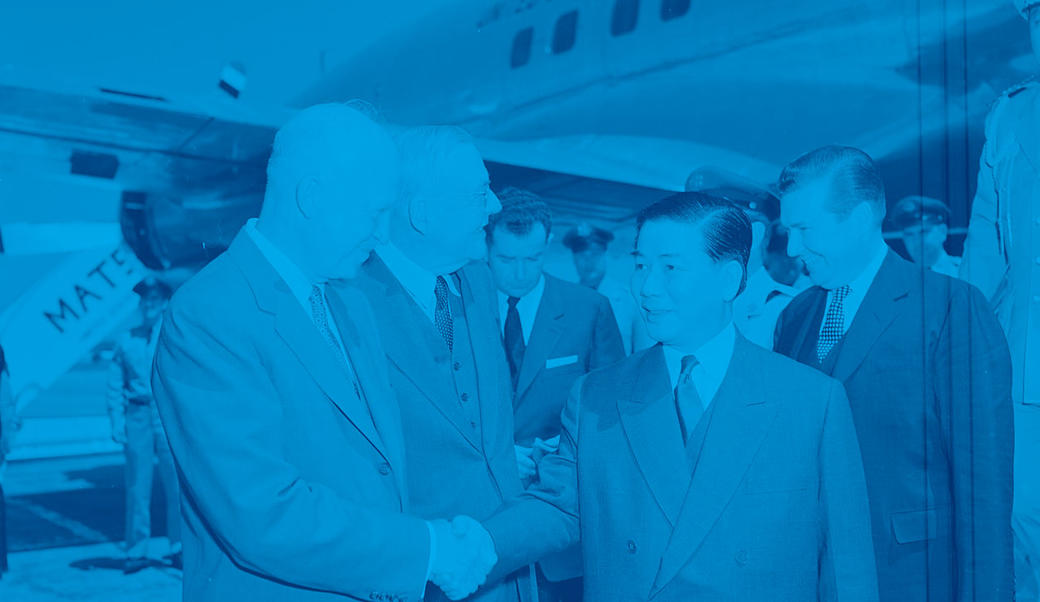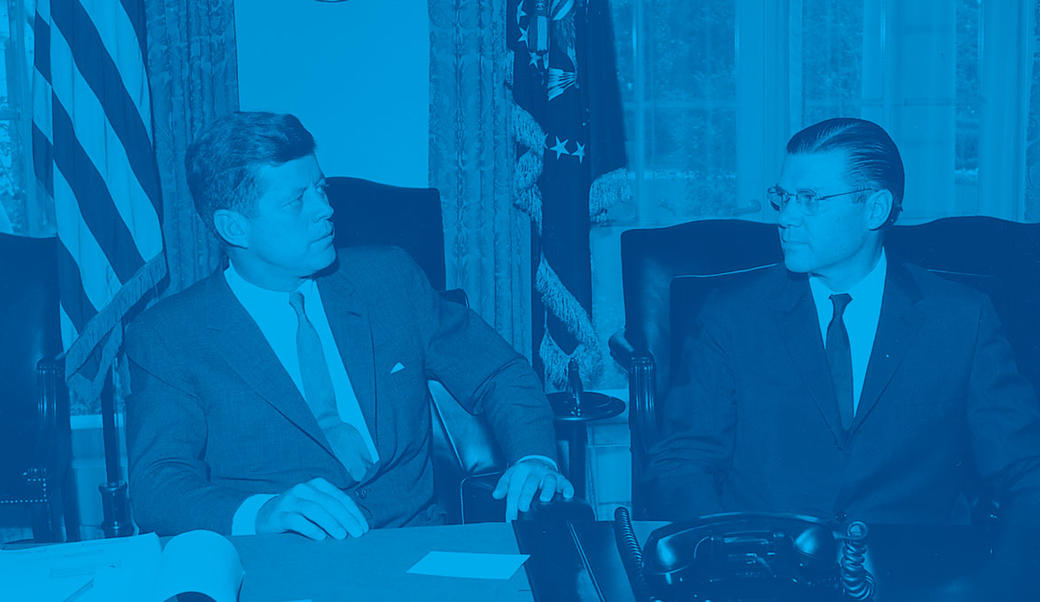John F. Kennedy: The American Franchise
During the Kennedy years, some Americans who had formerly felt the sting of discrimination made great breakthroughs in realizing the American Dream. For others, the early 1960s proved to be another disappointing era.
In 1963, President Kennedy initiated planning for what became the “War on Poverty.” He took these measures after reading an article by noted social commentator Michael Harrington entitled, “The Other America,” which detailed the plight of the poor. Kennedy ordered his economic advisers to consider new measures to deal with the one-fifth of the nation that had incomes below the poverty line. After Kennedy's death, President Lyndon B. Johnson moved to pick up Kennedy's poverty program, but also to massively expand it and elevate it among the priorities of his administration's domestic agenda.
In targeting poverty in America, Kennedy was motivated by more than a sense of “right” or responsibility (though those motivations arguably were important). In improving the lot of poor, Southern whites—particularly in Appalachia and the rural South—Kennedy hoped to win support of Southern members of Congress. By bringing these people into the mainstream, Kennedy also hoped to increase the Democratic electorate in the Southern and border states and stave off a Republican challenge to the party allegiance of white voters.
Changing Attitudes toward Religion
The 1960 election had thrust religion once again into the political debate. As a Catholic—the first ever to win the presidency—Kennedy implicitly challenged the religious status quo in American political life.
Kennedy gained much political support from Roman Catholics. Catholic votes for the Democratic ticket jumped when Kennedy ran for office. But some of this vote was a natural “rebound” after Catholic defections to Eisenhower; had Kennedy not been Catholic, it is arguable that he still would have won much of this vote. Kennedy's election effectively removed the taint of “dual loyalty” which falsely claimed that Catholics owed a political allegiance—and at times a primary allegiance—to the Pope in Rome. His family's good looks and culture broke stereotypes about Catholic ethnic groups consisting of uncultured and ignorant peasants. Like the Jews, Catholics in the second, third, and fourth generations were rapidly moving up in American society, and moving out from urban areas to the more affluent suburbs.
The Kennedy years also marked the advancement of Jews into high positions in government. Kennedy appointed Jews to his cabinet and to the federal courts, including the Supreme Court; some became close White House advisers. These years also signaled the beginning of the end of the routine exclusion of Jews from high corporate positions, country-club memberships, and exclusive residential neighborhoods, as well as the end of quotas on Jewish admissions to selective colleges and universities. It was no coincidence that many of Kennedy's most fervent backers were liberal Jewish intellectuals, particularly in the universities, and they flocked to be part of the Kennedy administration or serve as outside policy advisers.
Status of African Americans
African Americans were “the people left behind”: crowded into poorer neighborhoods, discriminated against, and actively prevented from obtaining good educations or jobs, victimized by criminals on the streets (and by unscrupulous merchants in stores), unprotected by the law or government. Kennedy had made many promises during the 1960 election that he would improve their lot.
As president, however, he moved slowly in this area. By distancing himself from civil rights leaders and only grudgingly pushing the federal government to protect civil rights workers, the Kennedy administration sent a signal to segregationists in the South that they could effectively defy the laws of the land. Kennedy promised during his election campaign to wipe out “with the stroke of a pen” discrimination in public housing by issuing executive orders. After months of delay, civil rights activists began sending pens to the White House to prod Kennedy to act. He eventually signed executive orders banning racial discrimination in wages by federal contractors, and in the sale, rental, or leasing of federal properties, but many observers remained disappointed in Kennedy's failure to act with more vigor to redress civil rights injustices.
Race Relations
The early 1960s political landscape was overwhelmingly white and middle class, a demographic that did not reflect accurately the breadth of American society. Race remained the great social, cultural, and economic divide. Puerto Ricans had moved into New York, Cuban exiles were flooding Miami, and Mexicans had been arriving in San Diego and Los Angeles for decades. But in absolute numbers and percentage, Hispanic Americans formed a negligible part of the population (perhaps 2 percent). They were an even smaller portion of the electorate and commanded little or no attention from national policymakers.
The “model minority” group was Asian: the Japanese Americans on the West Coast and the Chinese Americans on both coasts. The claim that there was “no juvenile delinquency” in their close-knit communities was a myth, but it symbolized a belief in stereotypes, shared by most Americans, that any racial and ethnic group could “make it” with hard work and the right attitude. The implicit contrast, of course, was with African Americans, particularly the “underclass” in the large cities. Lost in the contrast was the fact that poor Asian families, as well as black “strivers,” had succeeded in making it into the middle class—and higher. These stereotypes would later create racial tensions between Asian ethnic groups and African Americans. During the Kennedy years, there was essentially no national focus on issues involving Asian Americans, in part because these communities sought little government assistance or interference.
Advancement of Women
Reflecting the gender imbalance so notable in the Arthurian legend of Camelot with which it was later often associated (for different reasons), the Kennedy presidency failed to secure full equal opportunity for women, even as JFK backed the Equal Pay Act and sanctioned a commission on the status of women. During the Kennedy years, women continued to marry early, have children early, and defer to the career demands of the men in their lives. This dynamic seemed particularly relevant for the circle of high officials in the Kennedy administration. Kennedy's “New Frontiersmen” were just that—for the most part men—and women made few gains in federal office during his tenure. Most women who worked in politics in the New Frontier were on the fringes and in subordinate roles. The unmarried women took these roles as a prelude to their later careers as wives; the wives for the most part took on the roles of mothers and hostesses. Even though birth control pills, a factor usually identified as a prime catalyst for the gains of the women's movement, were introduced in the early 1960s, serious challenges to the subordinate status of women did not come until later in the decade.




